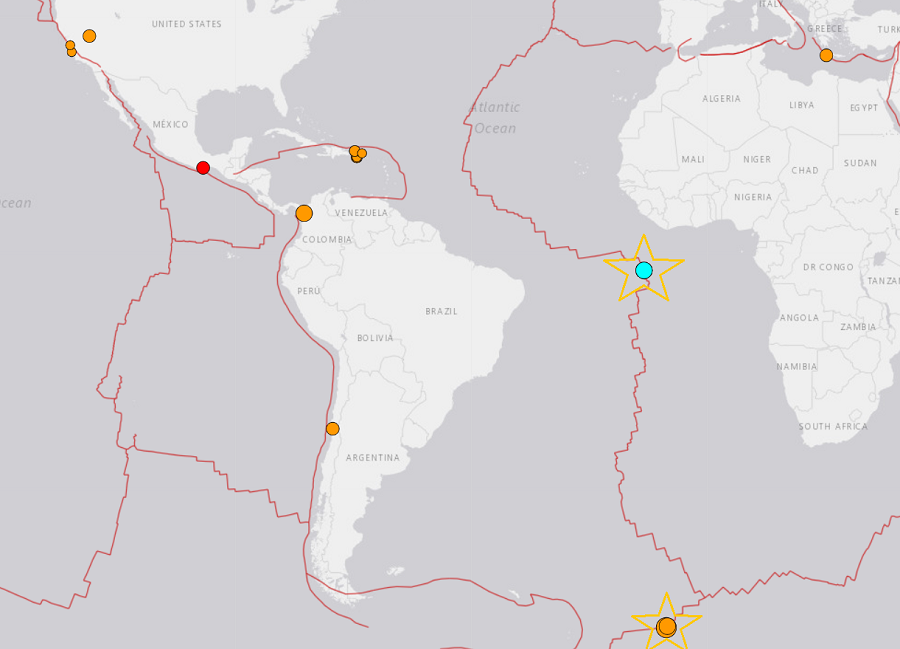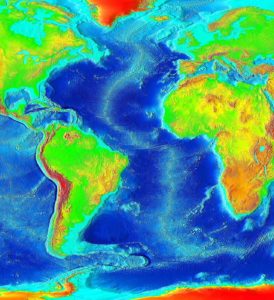
A series of strong earthquakes have rocked the Atlantic Ocean, but according to the Pacific Tsunami Warning Center in Ewa Beach, Hawaii, which tracks tsunami threats in the Atlantic too, there is no threat of tsunami to Puerto Rico, the U.S. Virgin Islands, the British Virgin Islands, or elsewhere along the U.S. East Coast and Caribbean at this time.

The most recent earthquake was a magnitude 5.0 which struck north of Ascension Island at 12:43 pm ET this afternoon. The area the earthquake occured is 1/2 way between New York City and Cape Town, and half way between Brazil and Lagos. The earthquake occured in a seismically active area of the Romanche Fracture Zone along the Mid Atlantic Ridge, which separates the South American Plate from the African Plate. In this part of the world, the two plates are moving apart, triggering earthquakes as they split above the ridge.
Yesterday, an even stronger 6.6 earthquake struck east of the South Sandwich Islands in the morning, followed by a weaker but still strong 5.0 earthquake last night. After the 6.6 struck, the Tsunami Warning Center issued a statement, saying “based on all available data… there is no tsunami threat to Puerto Rico, the U.S. Virgin Islands, or the British Virgin Islands from this earthquake.” For the U.S. East Coast, Gulf of Mexico, and eastern Canada, the Tsunami Warning Center issued an additional bulletin covering those areas, adding that “based on earthquake information and historic tsunami records, the earthquake is not expected to generate a tsunami.”
The stronger earthquake yesterday hit in the South Atlantic where the South American Plate is moving away from the Antarctic Plate.
These plates are based on the scientific theory of Plate Tectonics, which describes the large-scale motion of plates making up the Earth’s lithosphere. Scientists believe tectonic processes began on Earth between 3.3 and 3.5 billion years, building upon the concept of continental drift, a scientific concept developed in the early part of the 20th century. Continental drift is the gradual movement of the continents across the Earth’s surface through geological times.
Tsunamis are giant waves caused by earthquakes or volcanic eruptions under the sea. Out in the depths of the ocean, tsunami waves do not dramatically increase in height. But as the waves travel inland, they build up to higher and higher heights as the depth of the ocean decreases. According to the National Ocean Service, the speed of tsunami waves depends on ocean depth rather than the distance from the source of the wave. Tsunami waves may travel as fast as jet planes over deep waters, only slowing down when reaching shallow waters. While tsunamis are often referred to as tidal waves, this name is discouraged by oceanographers because tides have little to do with these giant waves.